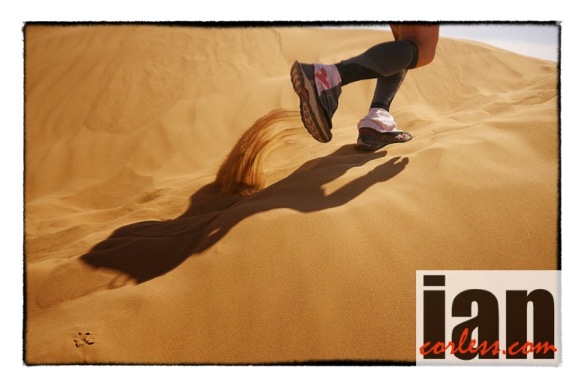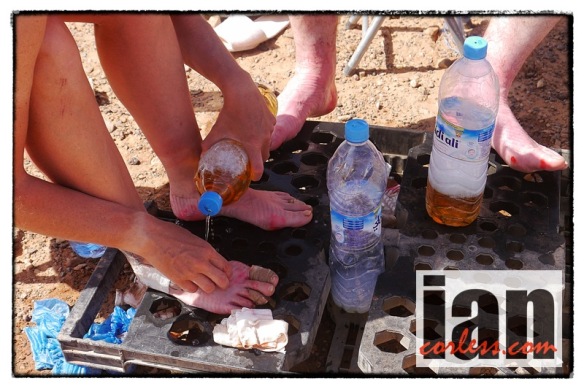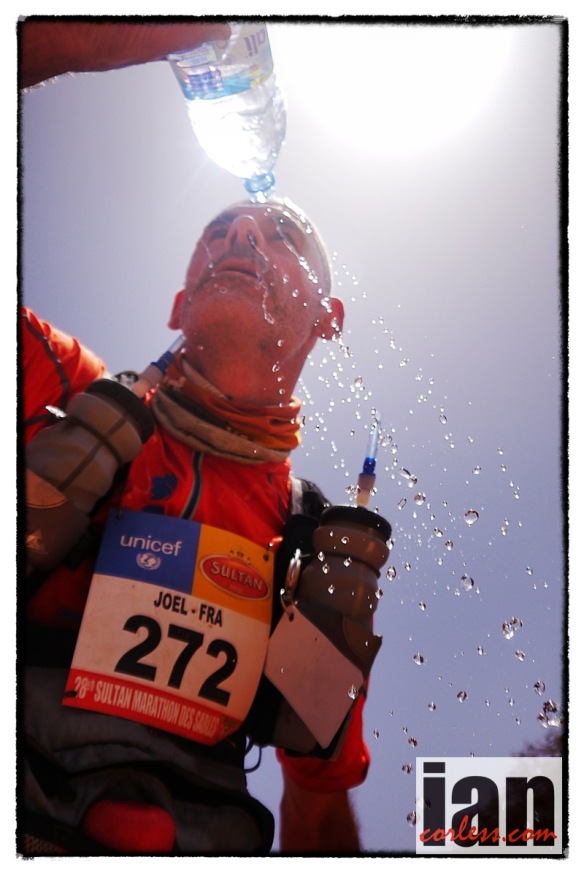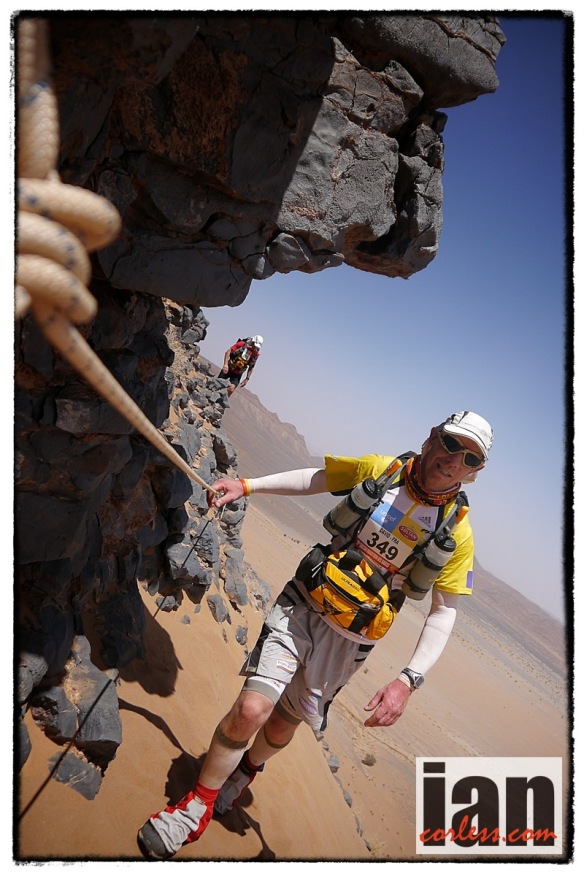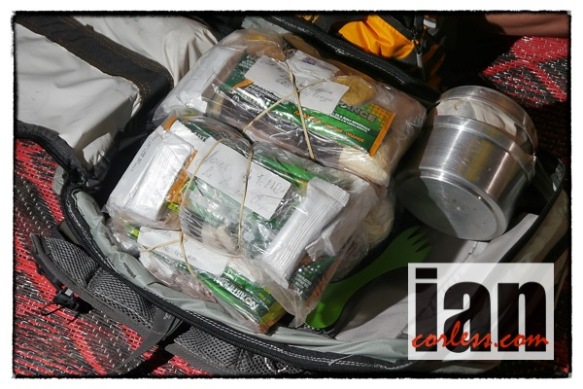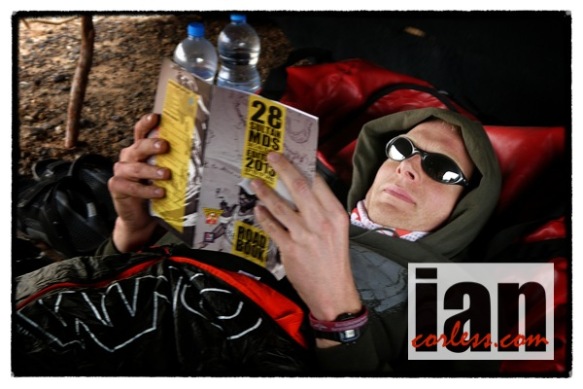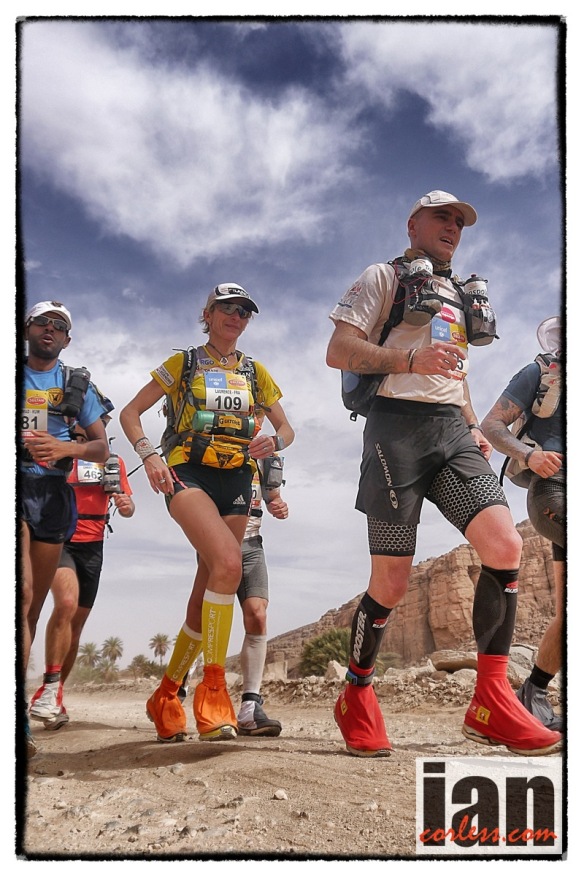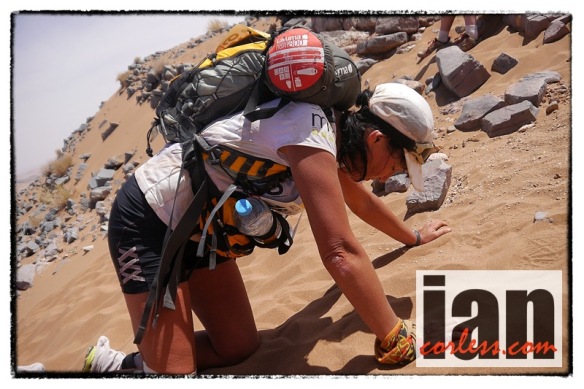Laurence Klein (FRA) is a triple winner of the Marathon des Sables; 2007, 2011 and 2012. In 2013, Laurence returned to the Sahara looking for a 4th crown. Running a strong and dominant race, Laurence looked invincible, however, on the long-day she suffered from the heat and was forced to withdraw from the race with dehydration opening the door for Meghan Hicks (USA) to take the lead and win the 28th edition of the race.
We can all learn and here, Laurence provides her top-10 tips for the MDS.
1/ RUNNING IN THE SAND
“Though sand is omnipresent along the Marathon des Sables course, you don’t just run in dunes. You also traverse stony zones, lunar landscapes and djebels. It’s important not to forget that detail in your preparation… To avoid getting tired, it’s also important to read the terrain you’re not used to. On large dunes for example, it’s best to run along the ridges and try to carve out your own wake so that you don’t sink into the sand as much. On the dunettes however, it’s easier to run in the tracks left by other competitors so as to use their footsteps like stairs. Finally, in the “fesh-fesh” (fine sand that looks like solid ground but behaves like soft mud), you really have to try to be as light on your feet as possible when you run.”
2/ AVOIDING BLISTERS
“Gaiters are essential in preventing sand from filtering through into your socks too much and causing large blisters. Those who are sensitive to them can also prepare their feet in the run- up to the event, by hardening them with special products or citric acid. On a personal level, I recommend choosing a suitable trail shoe, one or two sizes bigger than your usual town shoe, because feet tend to swell with the heat. Added to that, it goes without saying that when you have blisters, it immediately becomes a lot more painful to put your shoes back on with an additional layer of bandages if you’re already bordering on the limit of your shoe size.”
3 / HYDRATE REGULARLY
“Dehydration is one of the biggest risks in the desert. It’s imperative you don’t forget this and force yourself to systematically drink the water offered by the organisation, taking small, regular sips during the race and in the evening when you get into the bivouac. During this event, you also loose a lot of salt. As such it’s essential you remember to take the salt tablets supplied by the organisation and plan a diet rich in mineral salts.”
4/ PROTECT YOURSELF FROM THE SUN
“Avoid wearing dark clothing in the desert as it tends to retain heat. Instead, opt for light clothing and white caps, which reflect the light. It can also be very useful to keep a buff around the neck or the wrist, which you can moisten from time to time to freshen up and bring down your core temperature. The best thing is not to remove too much clothing, but not to wear too much either… and to protect oneself from the sun’s rays using a very good suncream.”
5/ A LIGHT, BALANCED BAG
“When you pack your bag, don’t forget that you have to add to it the litre and a half of extra water supplied by the organisation throughout the event… As such a bag weighing around 7 kilos is ideal. You also need to think about correctly distributing the weight between the front pack and the backpack, so as to remain balanced and avoid placing all the bag’s weight on your kidneys. Personally, I recommend putting everything at the front that will be of use to you during the day, energy bars, water, roadmap, compass, salt tablets, etc. That way you don’t have to unpack your bag to retrieve something that’s located at the back.”
6 / GET SOME REST
“It’s very important to get some good rest and sleep well. For this, don’t disregard the comfort of your sleeping bag and opt for a sleeping bag suited to temperatures of around zero. Indeed, even though it rarely gets cooler than that, the temperature range between day and night remains pretty significant and you can soon get cold. For the evening, the majority of runners use painters’ overalls, which keep out the cold and the wind, but you can also get very fine, very light technical clothing with long sleeves.”
7/ EAT PROPERLY
“Whether you opt for freeze-dried meals or simpler food with a rice, pasta, couscous or mashed potato base, the most important thing is to have a good distribution between protein, which are used to repair the muscles that are in such heavy demand during exertion, carbohydrates, which enable you to quickly restore your energy and speed up the body, and fats, which are essential for the body to work efficiently; especially with this type of exertion where you dig deep into your store of fat. Similarly, don’t think twice about stepping up a little on the organisation’s requisite minimum daily dose of 2,000 calories a day.”
8/ FINDING ONE’S BEARINGS
“Aside from some of the dunes, where you do need to know how to use a compass to keep on course, the risks of getting lost are virtually non-existent. Indeed the marking is very well done by the organisation throughout the course and there’s substantial monitoring of the runners by the race stewards. However that’s no reason not to learn to use a compass before taking off for Morocco!”
9/ MANAGING ONE’S EFFORT
“The Marathon des Sables is a long race. As such you need to spread out your effort with the passing days and, most importantly, you mustn’t set off too quickly on the first leg. Instead take the time to adapt to the different terrains you will encounter. You should also think about saving your energy so that you aren’t too tired when it comes to the long stage on the 4th day. To do this, think about getting some good rest in the evening as soon as you return to the bivouac.”
10/ LIFE IN THE BIVOUAC
“Life in the bivouac is very important. To really make the most of it, I advise you not to bring along your mobile phone so you can fully benefit from each and every moment. Indeed, a whole life and sense of solidarity takes shape within it… The runners are divided up into tents of eight people and they very quickly encourage and support one another and eat together… You have to learn to be generous within it and not get annoyed, remaining open to others. The MDS is a large family. There’s a big communion between the runners and you have to know how to respect that.”
Read a preview of the 2014, 29th Marathon des Sables HERE
Follow the race at http://www.iancorless.com and on Facebook HERE and Twitter HERE
Content ©marathondessables
All images ©iancorless.com – all rights reserved


